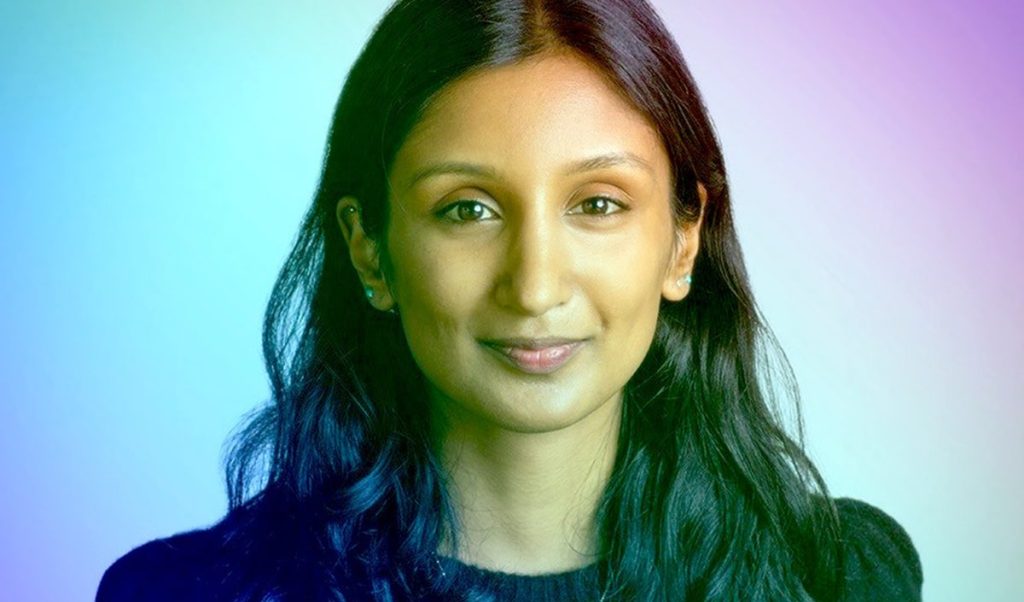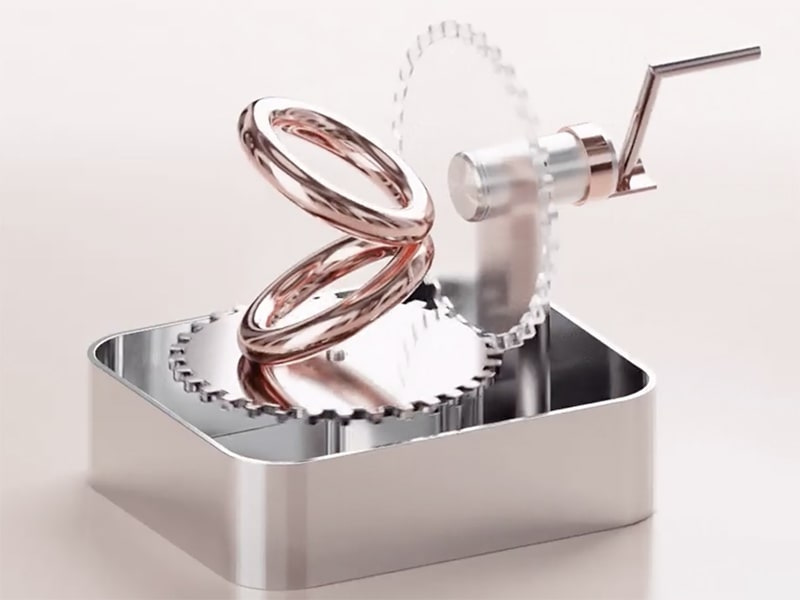A New Look at Art in a Whole New Way

Who could have imagined the impact of technological advances? Now the power of the internet is allowing artists to create and sell NFTs to reach a worldwide audience. Here, Shivani Mitra from the Museum of Crypto Art talks with Dolce to help readers understand and appreciate crypto art.
Picture this: you’re on your computer and you see some digital artwork. You purchase the non-fungible token (NFT) on the blockchain. Congrats, you own a piece of crypto art. Hold on. What’s crypto art? “Crypto art is bleeding-edge artwork done on the blockchain,” says Shivani Mitra, managing director and curator of the Museum of Crypto Art. It’s digital art that’s using blockchain technology for verification. And that’s what makes it valuable: it’s unique and it can’t be copied easily. Previously, digital art could be copied repeatedly, so it was impossible to assign any value to it, like the kind that traditional art has always enjoyed.

What is crypto art? It’s art that’s using blockchain technology for verification. You make the purchase using non-fungible tokens (NFTs). And that’s what makes it valuable: it’s unique and it can’t be copied easily. Even Twitter co-founder Jack Dorsey sold his first-ever-tweet NFT for almost three million dollars
Wait up. What’s an NFT again? These tokens are a cryptocurrency that verifies digital works of art into unique assets, which can be traded on the blockchain. Um, blockchain? It’s a new technology that artists are using to create galleries and marketplaces. With blockchain, artists can sign their digital artwork, so they’re the owners of a one-of-a-kind piece. Now that the piece has an owner, it can be sold and bought. People can still copy the artwork, but it will have no value, and the buyer, including an increasing number of collectors now, will have the only signed copy.
For the artist, crypto art offers protection. Anyone can grab a screenshot of visual art that they like from Instagram, then download it and put it on a T-shirt, Mitra says. But with crypto art, the digital object is protected with cryptography, protecting the art through codes, “which says this is the only place where this exists on a secure place,” she explains. As for the buyer, if someone finds the art valuable enough to own the only verified version, then it’s worth it. It’s an entirely different way of appreciating art, because you can now have it on your smart devices. People can create virtual galleries and flip through them on a phone, for instance. Your art doesn’t just hang on a wall at home.
As for the museum, it has branded itself as “the premier space for discourse around digital art, crypto culture, frontier technology, and the NFT revolution … seeking inspiration and leadership from an inclusive and global community.” The aim is to connect artists and collectors, transforming the way that digital art collections are grown and shared.
Mitra is proud of the museum. The daughter of hardware and software engineers, she learned programming as a young teen, then she majored in art history and biochemistry, and started along a path to go to medical school. Until she started to learn about Ethereum, which she thought was amazing. Stop. What’s Ethereum? It’s a platform powered by blockchain technology that’s best known for its cryptocurrency, usually called ether or ETH. “This is potentially a whole new financial incentive system that is not owned and run by governments and hedge fund managers, but by the people,” she says. A family member put her in touch with Colborn Bell, who went on to become the co-founder and director of the museum, and they both started to learn about virtual worlds and how to build virtual reality (VR) environments with artwork imported directly from a blockchain. “Both of us thought that was totally revolutionary,” she says.
“I was interested in building a decent museum that was focused on education and scholarship, and being a public good and a foundation and not participating in market speculation,” she says. In fact, Mitra is more interested in people coming together to discuss artwork that speaks to them, instead of someone sitting in a chair in an office and saying, “This is the best art.”
This metauniverse museum is truly mind-bending, but, in a reversal of roles, there are plans for a bricks-and-mortar building coming down the pipeline. Just don’t expect pictures hanging on walls. Instead, think VR headsets, projection mapping onto ceilings and digital frames. “We’re going to create a lot of immersive displays and host a residency there for different artists,” she says.
For artists, Mitra offers inspiration. “If you’re a young artist and you have an internet connection, there is every tool out there for you to find collectors and make a practice out of your work if you are able to understand this ecosystem,” she says. “I know it is hard, but I think it is possible.”
AN ARTIST’S SUCCESS STORY

Photo From Twitter @arc4g
Meet Abdullah, a.k.a. ARC4G, a 22-year-old artist who lives in Saudi Arabia. He’s a member of the Museum of Crypto Art and creates artwork on his smartphone. ARC4G lives with a debilitating disease, spinal muscular dystrophy, but he is able to support his family now.
“He creates amazing, high-resolution art, small movements of objects,” says Shivani Mitra, managing director and curator of the Museum of Crypto Art. Asked to describe his art, ARC4G says it’s “soothing, pretty loops that are fun to look at.” He has been creating crypto art for about five years now, discovering crypto art in 2019, when he was invited by a non-fungible token (NFT) platform to showcase his art. At first, ARC4G was skeptical, but then it clicked. “It was one of the best decisions I’ve ever made,” he says. For him, one of the most surprising things is how welcoming everyone is in the community — everyone is eager to help.
In fact, he loves creating art on this medium because it takes away much of the stress associated with selling his art: he showcases his art, and if someone likes it, they can choose to own it. And ARC4G doesn’t have the stress of selling art with a traditional model. Because he lives with a disability that limits mobility and strength, the beauty of digital art and art in general is that they don’t require fast movement or high dexterity, he adds. “I can take my time using the very slow and limited hand movement that I have.”
ARC4G has just one message for people with disabilities and even just those who are told they aren’t good at creating art: “If you enjoy something, do it for yourself and don’t worry about anything else,” he says.
www.museumofcryptoart.com
@museumofcryptoart
Interview by Estelle Zentil










































































